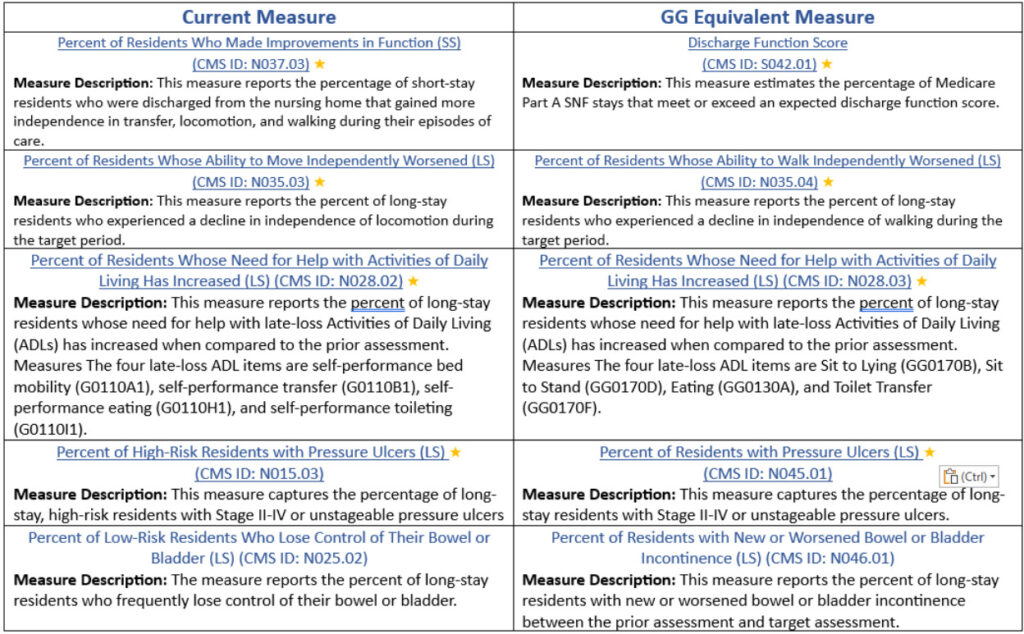
I love this time of year. Christmas is on its way. I especially love the holiday movie classics, “A Christmas Story,” “Planes, Trains and Automobiles,” “Miracle on 34th Street,” “White Christmas,” “It’s a Wonderful Life,” and, of course, “Christmas Vacation.” We watch them all every year, with vigor.
“National Lampoon’s Christmas Vacation” has so many funny one-liners. Remember when Clark finally gets the house lit up and each family member comments on the spectacle? When it finally gets around to Clark’s father, he is at a loss for words and all he can get out is, “It’s a beaut Clark, it’s a beaut!” Just then, Cousin Eddie shows up, and, well, you know the rest.
It’s been kind of like that this year, hasn’t it? We finally got the new MDS in all its glory and then things started to go downhill — kind of like Cousin Eddie showing up. The challenges we’ve faced with this implementation have been unprecedented and many.
All of the prep work and long training hours hit a snag when we all began to realize that there were, and still are, issues to get used to and some that still need to be talked about. I’m thinking specifically about the unfolding changes to the quality measures and Five-Star rating now that section G has been officially retired.
There are five quality measures that will be affected by these changes. The table below crosswalks these five measures to their GG equivalent measures. Note that measures one through four affect the Five-Star rating.

Recently, the Centers for Medicare & Medicaid Services released QSO-23-21-NH in which it spelled out the effect that removal of section G would have on the four quality measures that will impact the Five-Star rating.
Specifically, CMS indicated that, “Starting in April 2024, CMS will freeze (hold constant) these four measures on Nursing Home Care Compare. In October 2024, CMS will replace the short-stay functionality QM with the new cross-setting functionality QM, which is used in the SNF Quality Reporting Program (QRP). The remaining three measures will continue to be frozen until January 2025 while the data for the equivalent measures are collected.”
CMS also posted an announcement in November addressing two important impacts that this Section G to GG transition will have on the reporting of all five quality measures on the IQIES MDS 3.0 Facility-Level Quality Measure (QM) Report.
- “… these five measures were frozen (held constant) in the iQIES MDS 3.0 Facility-Level and Resident-Level QM Reports on 10/1/2023. Starting on the first Monday of November, iQIES will process any qualifying records submitted on or after 10/1/2023 that had a target date prior to 10/1/2023 in order to provide updated measure data based on newer submissions.
- “… MDS records with a target date on or after 10/1/2023 will not be included in these impacted measures. As a result, if the requested report period (i.e., Begin Date Range and End Date Range) in the MDS 3.0 QM Reports includes dates on or after 10/1/2023, then there would be expected decreases in the numerator and denominator due to the MDS G-GG transition.”
In addition to these notifications, CMS also released MDS 3.0 Quality Measures USER’S MANUAL (v16.0) which contains the technical specification changes to the quality measures noted above. Providers should become familiar with the revised specifications. All five measures contain striking differences that we will need to understand and get used to.
One example of this is the current measure, “Percent of Residents Whose Ability to Move Independently Worsened,” which measured the change over time of MDS item G0110E Locomotion on unit. This MDS item was defined as, “How a resident moves between locations in his/her room and adjacent corridor on same floor. If in wheelchair, self-sufficiency once in chair.”
The GG Equivalent Measure, “Percent of Residents Whose Ability to Walk Independently Worsened,” measures only MDS item GG0170I Walk 10 feet defined as, “Once standing, the ability to walk at least 10 feet in a room, or similar space.” The GG equivalent measure eliminates measuring a large portion of the long-term care community who use wheelchairs for locomotion. This is not an equivalent measure and begs the question, “Is this really a useful measure for the long-term care population?”
Another example is the current measure, “Percent of Residents Whose Need for Help with Activities of Daily Living Has Increased.” This measure used the four late loss ADLs, Bed Mobility, Transfer, Eating and Toilet Use as proxies for declines in function over time.
While the measure title and description has not changed for the GG equivalent measure, the MDS items it measures, again, are significantly different from what the section G items measured in the current measure. The revised QM measures the following items out of section GG, Sit to Lying, Sit to Stand, Eating, and Toilet Transfer.
You are probably as surprised as I was when I first saw this new measure. Take toilet use vs. toilet transfer for example. In section G, toilet use was defined, “…as how resident uses the toilet room, commode, bedpan, or urinal; transfers on/off toilet; cleanses self after elimination; changes pad; manages ostomy or catheter; and adjusts clothes. Do not include emptying of bedpan, urinal, bedside commode, catheter bag or ostomy bag.”
The GG equivalent toilet transfer only represents the resident’s, “…ability to get on and off a toilet of commode.” This too is not an equivalent measure and again begs the question, “Is this really a useful measure for the long-term care population?”
These are huge changes. Keep in mind that all, but the discharge function score measure, are long-stay measures. It is relevant to remember that Section GG was developed as a standardized way to measure functional ability across post-acute care, not long-term care. It seems as if CMS is trying to pound square pegs into round holes here and it’s a bit bewildering as to why, the IMPACT Act notwithstanding. Nonetheless, preparation will be key as these new measures are phased in over the next year.
When Cousin Eddie showed up at the Griswolds to a surprised and befuddled Clark, Eddie askes “Clark, are you surprised?” To which Clark responds, “Surprised, Eddie … if I woke up tomorrow with my head sewn to the carpet, I wouldn’t be more surprised than I am right now.”
These G to GG equivalent measures are no less surprising and puzzling. Perhaps if CMS had engaged the provider community to some degree before they finalized these changes, we may not be having this conversation. But here we are. The innocence of the MDS is that it started out as a standardized way to assess residents, create care plans, and measure quality. The fundamental idea is a “beaut” — it’s the nursing process for goodness’ sake.
These new complexities, in my opinion, take away some of the original intent. It doesn’t have to be this hard. Like the arrival of Cousin Eddie, we will have to accommodate these measures. Part of that may mean we will need to press CMS to make continued adjustments to these long stay measures affected by the G to GG transition so that they better reflect the long-term population in our communities. I hope there may be opportunities here.
In the end, despite Cousin Eddie’s unanticipated appearance and Clark’s Christmas bonus debacle, the Griswolds were able to give Christmas to Eddie’s kids. Christmas really does embody the idea of hope.
Amid all the changes we have had to assimilate this year, let’s encourage each other not to lose sight of the gifts we bring each day to the residents we serve. A little hope goes a long way.
Joel VanEaton, BSN, RN, RAC-CT, RAC-CTA, is a master teacher and the executive vice president of PAC Regulatory Affairs and Education at Broad River Rehabilitation.
The opinions expressed in McKnight’s Long-Term Care News guest submissions are the author’s and are not necessarily those of McKnight’s Long-Term Care News or its editors.
Have a column idea? See our submission guidelines here.





